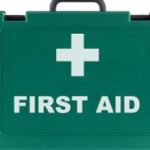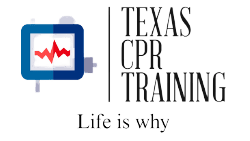
First Aid
Accidents can happen anywhere anytime. Most accidents that happen in the home are falling, trips, bruises, sprains, cuts, burns, choking, poisoning. Most accidents that happen in the workplace are over exertion, lifting, pushing, pulling, holding, carrying, etc.
First Aid is defined as help given to a sick or injured person until full medical treatment is available.
Would you know what to do? You can learn by taking a First Aid course at Texas CPR Training, www.texascpr.com.
Here is an outline of topics:
Duties, Roles, and Responsibilities of First Aid Rescuers
Your Role in the EMS System
Deciding to Provide First Aid
Asking to Give First Aid
Maintaining the First Aid Kit
Good Samaritan Laws
Key Steps of First Aid
Questions for Assessing the Scene
When to Phone for Help
How to Phone for Help
Who Should Phone for Help
Follow The Dispatcher’s Instructions
Personal Protective Equipment
Actions for Universal Precautions
Actions for Exposure to Blood
Actions for Removing Protective Gloves
Good Hygiene and Washing Hands
Actions for Finding the Problem
Moving and Ill or Injured Person
Protecting the Persons Privacy
Medical Emergencies
Breathing Problems
Actions for Assembling and Using Inhalers
Actions for Helping Someone With Breathing Problems
The Choking Sign
How to Help Someone With a Severe Airway Block
How to Help a Choking Pregnant Woman or Large Adult or Child
How to Help When a choking Person Becomes Unresponsive
Allergic Reactions
Mild vs Severe Allergic Reaction
How to Use an Epinephrine Pen
Difference Between Heart Attack and Cardiac Arrest
Fainting
Diabetes and Low Blood Sugar
Stroke
Seizure
Injury Emergencies
Bleeding
Tourniquets
Wounds
Nosebleeds
Tooth Injury
Eye Injury
Penetrating or Puncturing Injury
Amputation
Internal Bleeding
Head, Neck and Spinal Injuries
Broken Bones and Sprains
Actions to Apply a Splint
Burns and Electrical Injuries
Environmental Emergencies
Bites and Stings
Snake Bites
Bee Stings
Spider and Scorpion
Heat Related Emergencies
Heat Cramps
Heat Exhaustion
Heat Stroke
Cold Related Emergencies
Frostbite
Hypothermia
Poison Emergencies
Heartsaver First Aid Courses
The American Heart Heartsaver courses are designed for anyone with little or no medical training who needs a course completion card for job, regulatory (for example, OSHA), or other requirements. These courses can also be taken by anyone who wants to be prepared for an emergency in any setting. For many Heartsaver courses, students receive a course completion card that is valid for 2 years.
Heartsaver® First Aid is a video-based, instructor-led course that teaches students critical skills to respond to and manage an emergency in the first few minutes until emergency medical services arrives. Students learn duties and responsibilities of first aid rescuers; first aid actions for medical emergencies, including severe choking, heart attack, and stroke; and skills for handling injury and environmental emergencies, including external bleeding, broken bones and sprains, and bites and stings.
Features of the American Heart First Aid course
Video-based course ensures consistency
Instructor-led, hands-on class format reinforces skills proficiency
Course is updated with the new science from the 2015 AHA Guidelines Update for Cardiopulmonary Resuscitation and Emergency Cardiovascular Care.
OSHA’s standard for first aid training in general industry, 29 CFR 1910.151(b), provides:
In the absence of an infirmary, clinic, or hospital in near proximity to the workplace which is used for the treatment of all injured employees, a person or persons shall be adequately trained to render first aid. Adequate first aid supplies shall be readily available.
Take a class today for home or work. Texas CPR Training is here to help you! If you are a group needing us to train at your location call us at 214-770-6872.
Brought to you by Texas CPR Training
